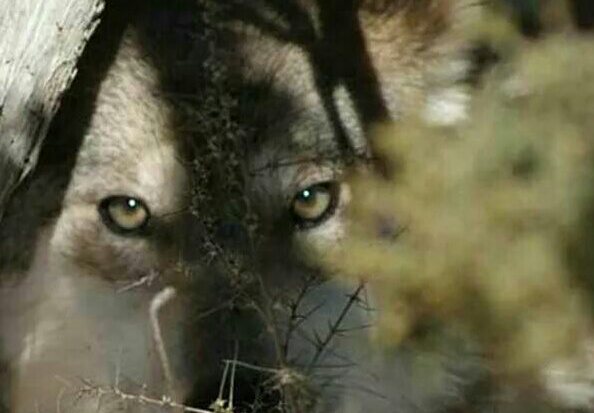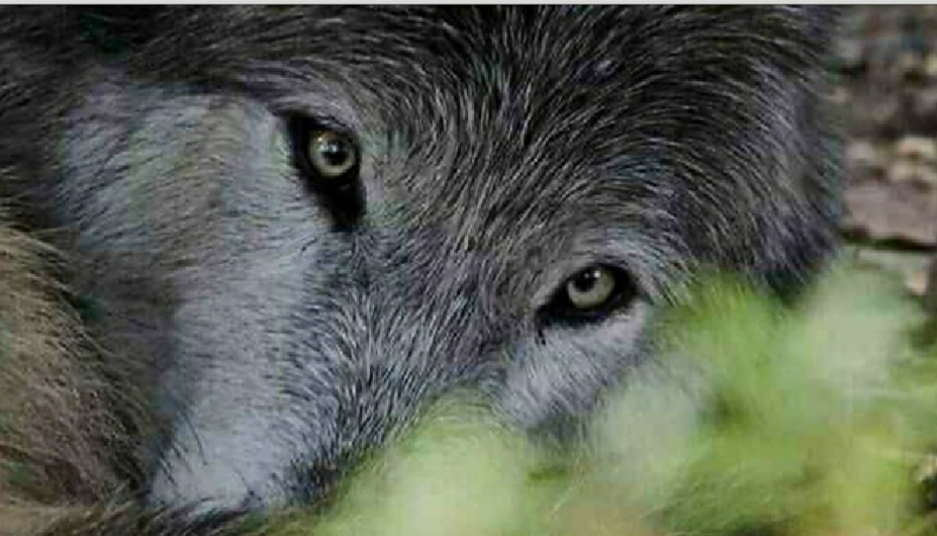Livestock grazing is promoted, protected and subsidized by federal agencies on approximately 270 million acres of public land in the 11 western states. By destroying vegetation, damaging wildlife habitats and disrupting natural processes, livestock grazing wreaks ecological havoc on riparian areas, rivers, deserts, grasslands and forests alike — causing significant harm to species and the ecosystems on which they depend.
“Conservation can be defined as the wise use of our natural environment: it is, in the final analysis, the highest form of national thrift—the prevention of waste and despoilment while preserving, improving and renewing the quality and usefulness of all our resources.”
President John F. Kennedy
Conservation Message to Congress (1962)
Presently, Bridger-Teton National Forest permits allow more than 7,000 sheep and 15,000 cattle to graze public land in the Upper Green. The environmental planning document from the Forest Service, which would allow grazing in the area to continue for years to come, proposes to renew livestock grazing permits on 266 square miles of public forestland near the Upper Green River has been released to the public.
The USDA Forest Service’s preferred plan calls for retaining grazing rights on all the acreage that is grazed today and slightly reducing the number of livestock allowed to 8,772 cow-calf pairs and yearling cattle. The Bridger-Teton’s proposal (alternative 3) which would reduce the authorized grazing season on four of six allotments, and add 7 miles of fence line is still a nightmare for wolves, grizzlies, the ecosystem and other wildlife.
Hardly an environmentally friendly plan.
Take a moment to comment against plans for the future of the massive grazing allotment complex, which is also prime wolf and grizzly habitat. The complex spans the entire* Bridger-Teton National Forest from north to south, spills into the Gros Ventre River drainage, and is an environmental disaster.
The Forest Service makes the outrageous claim that their proposal is a “livestock grazing strategy designed to maintain existing rangeland and riparian conditions where they meet desired conditions and improve rangeland and riparian conditions in areas of concern.”
The Upper Green rangeland is the most concentrated area for grizzly bear conflict in the entire Greater Yellowstone Ecosystem. A year ago, 80 livestock were confirmed killed by the large carnivores, and five chronically depredating grizzlies were captured and killed in return. Numerous wolves have also been removed for the crime of consumption of the “wrong ungulate”.
Beyond the Fish and Wildlife-directed guidelines, the Bridger-Teton’s plan introduces no new required nonlethal techniques to stem grizzly-cattle conflict. Forest planners hope to finalize the document before the next grazing season, by which time grizzly bears may be managed by Wyoming.
Three other alternatives are included in the Bridger-Teton’s lengthy planning document.
One option would take “no action” and allow no livestock on the rangeland, and another would continue the grazing regime as it occurs today. A fourth alternative focuses on reducing damage to riparian areas from cattle grazing.
Comments on the Bridger–Teton’s draft plans for the Upper Green rangeland are due by November 21st. More information can be found here, and here. Objections are due by January 8, 2018.
Find a simple copy/paste and send email here: TAKE ACTION by January 8, 2018
If you prefer, you may comment on The Upper Green River Area Rangeland #3049 project here or send your objection via email directly to Dave Booth from this post. Send your email here: dbooth@fs.fed.us (talking points below).
Read the alternative options here.
*The 323-square-mile public lands rangeland complex in the Upper Green is the largest grazing allotment in the U.S. Forest Service system. The draft plan includes grazing permits on 266 square miles of this area.
*The allotments are the site of about 40 bear-livestock conflicts a year, according to Forest Service documents.
Before September 23rd 2014, when the U.S. District Court for the District of Columbia ruled against the U.S. Fish and Wildlife Service’s (USFWS) delisting of wolves in Wyoming, life for a wolf was miserable, designated and “managed” as Trophy Game Animals in the Northwest
(just $18 for Wyoming residents to ‘bag their trophy”). In the rest of Wyoming, designated as Predatory Animals subject to an on-sight shooting policy, killed by any means, at any time, without a license. Should wolves lose their protected status in Wyoming, the species will be subject to this sort of mismanagement within the Bridger-Teton National Forest (Update: Appeals court lifted federal protection for Wyoming wolves in March, 2017).
National Forests and Other Public Lands
should not be managed for the profit margin of private businesses. Period.
The Forest Service allows people to enter into a publicly owned national forest to kill wolves, often without restrictions. Wildlife is one of the five purposes of the national forests under the Multiple Use Sustained Yield Act, and the Forest Service is obligated to manage for healthy, viable populations of wildlife under the National Forest Management Act and the agency’s own regulations.

Please take a few moments of your time to comment against livestock grazing in the Bridger-Teton National Forest. Eliminating livestock grazing on this enormous allotment might possibly do more for grizzly bears and wolves than any other area in Wyoming.
Please select Alternative One ~ No Livestock Grazing.
Under alternative one, livestock would no longer be permitted to graze in the six allotments on the Upper Green River project area. Livestock grazing would be eliminated and current term grazing permits would be cancelled. Livestock grazing would cease two years after notice of cancellation.
The animal and plant populations of the west evolved in an ecosystem that relied on a certain amount of grazing by native animal populations, but the level of grazing that accompanied the introduction of cattle in the last 300 years disrupts the symbiotic relationships of native plants and animals.

Send a tweet to your following:
Help save #Wyoming #wolves #grizzlies #wildlife Comment against largest @forestservice grazing allotments by 11/21
http://wp.me/p6o9qd-11g Tweet this
Talking points:
• Numerous studies have documented that the mere presence of domestic animals displaces native species.
• It is impossible to produce livestock in the west without a multitude of negative impacts including soil erosion and compaction, water pollution, the spread of invasive weeds, spread of disease from domestic animals to wildlife, changes in plant community structure, interruption of natural nutrient cycles, disruption of natural fire regimes, degradation of riparian zones (the majority of riparian areas on public lands are not what hydrologist’s term “proper functioning condition”).
• With livestock comes the removal of predators like wolves and grizzlies.
• With livestock comes the removal of “pests” such as prairie dogs, a competitor of livestock, which were reduced in population to less than 1 percent of their estimated pre-19th century numbers. Because prairie dogs share dependencies with approximately 200 other wildlife species of the prairie ecosystem, their decimation led to drastic declines in the populations of these other animals. Among them, none had been more adversely affected than the black-footed ferret. Once numbering in the tens of millions, by 1986 the species had dwindled to only 18 free-living individuals.
• The degradation and domestication of our public lands with fencing, water tanks, pipelines, and other infrastructure designed to make our public lands better “stock yards” for the benefit of the few ~ public lands ranchers. Livestock grazing infrastructure, commonly bought and paid for by the American tax-payer, has quite literally tamed the once wild West. Hundreds of thousands of miles of fencing on public lands have obstructed natural wildlife movement the migration of native ungulates, which can lead to death during times of environmental stress, such as droughts and blizzards.
Water developments built to facilitate livestock use of public lands have dewatered springs, seeps, and streams which serve as critical habitats for a variety of wildlife across the West.
• There are very few places in the West where native ungulates like bighorn sheep, deer, and elk are at their true biological carrying capacity because the bulk of forage is allotted to domestic livestock. Overgrazing by cattle can literally extirpate native vegetation. In one study, scientists found that domestic livestock grazing consumed 88.8 percent of the available forage. Fewer elk, deer, pronghorn antelope, bighorn, and even bison, means that is that much less prey is available to sustain wolves, and other top predators.
• In the United States, livestock grazing has contributed to the listing of 22 percent of federal threatened and endangered species—almost equal to logging (12 percent) and mining (11 percent) combined. Nationwide, livestock grazing is the 4th major cause of species endangerment and the 2nd major cause of endangerment of plant species. No other human activity in the West is as responsible for the decline or loss of species as is livestock production.

References and Related content:
In the shadow of the wolf update
Veterinarians in Wildlife and Ecosystem Health Excerpt
Public Lands Ranching
The Case against Public Lands Livestock Production
No Such Thing As PredatorFriendly Beef
16 wolves get death penalty for eating into Wyoming cattle rancher profits
3 wolves in problematic pack targeted after livestock loss
Why Wipe Wolves from Most of Wyoming
Wyoming Court Seeking Control of Wolves
Wolves, livestock clash all around Wyoming
Public Lands Grazing
BTNF cuddles ranchers on Upper Green
Upper Green Grazing Analysis Out
Sierra Club’s Grazing Campaign
Feature image by Christi Sabin. All other photography by Chris Montano Jr.
Copyright © 2016
[COPYRIGHT Intheshadowofthewolf, name and webpage]. All Rights Reserved. No part of this publication may be reproduced or distributed in any form or by any means, or stored in a database or retrieval system, without the prior written permission of the publisher.



You must be logged in to post a comment.